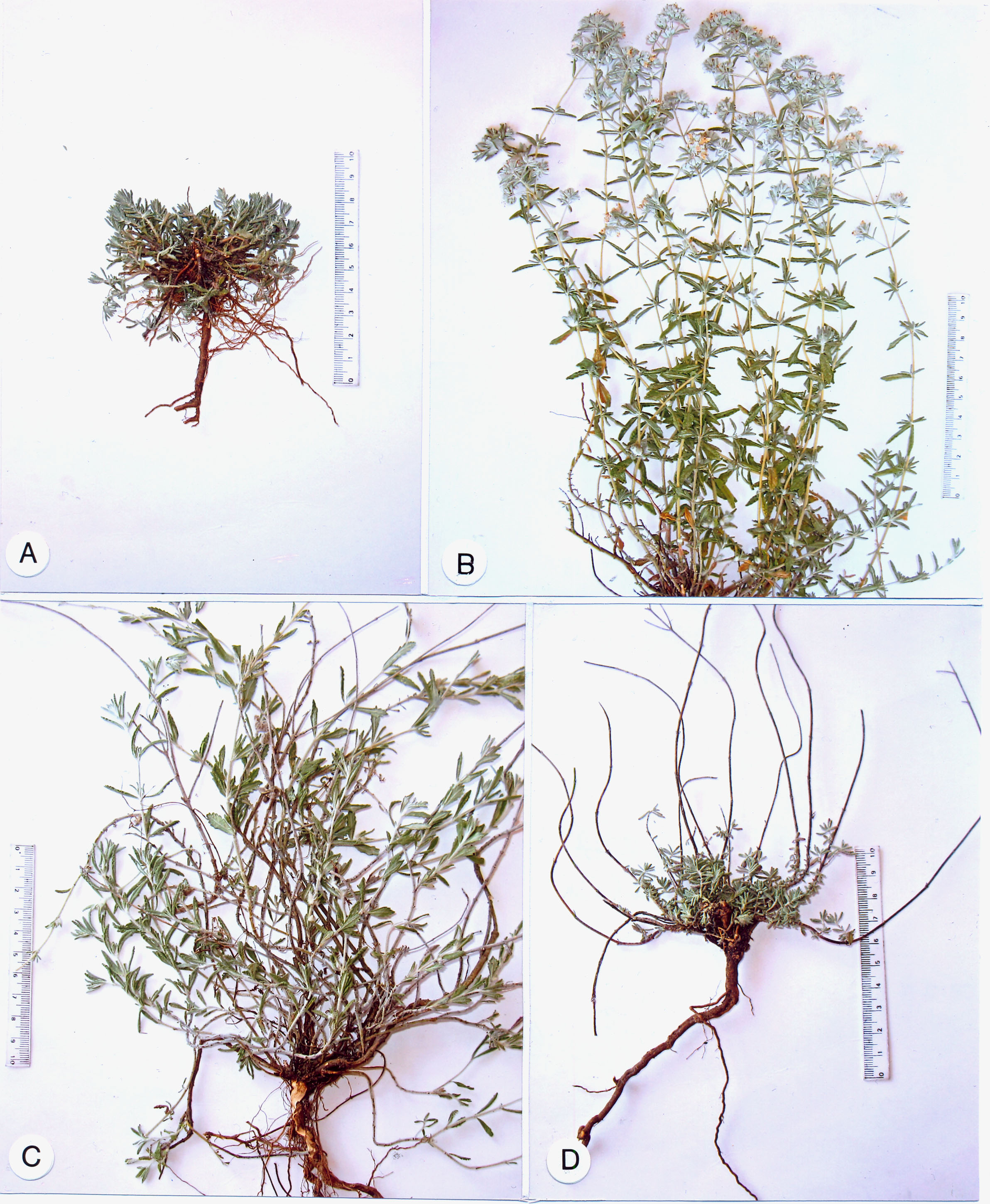The annual biological cycles of Teucrium polium L. and Thymus sibthorpii Bentham (Lamiaceae)
Abstract
Teucrium polium appears in winter as a cluster of short shoots with small leaves (chamaephyte). In early spring, shoots progressively elongate until in late spring shoot elongation ceases. At the tip of each shoot, an inflorescence (dichasium with apical racemes) is developed which completes pollination by the end of July. Summer leaves are about 10-fold larger than winter leaves. In November, summer leaves are shed and the leaf-naked shoots later become dried and abscise. In winter, the dormant buds at the base of the plant break dormancy and generate many short shoots forming a claster.
Thymus sibthorpii is also chamaephyte. In early spring, the short winter shoots start increasing in length and by the end of April shoot elongation becomes completed. On the tip of each shoot an inflorescence (raceme) is developed which completes pollination by the end of May. In summer, plants consist of leaf-bearing shoots only (inflorescence axes dry and then drop down). In November, all leaves are shed and small shoots sprout out from dormant buds at the base of the plant.
References
Askun T., Tekwu E.M., Satil F., Modanlioglu S., Aydeniz H. 2013. Preliminary antimycobacterial study on selected Turkish plants (Lamiaceae) against Mycobacterium tuberculosis and search for some phenolic constituents. BMC Complement. Altern. Med. 13: 365.
Bahramikia S., Yazdanparast R. 2012. Phytochemistry and medicinal properties of Teucrium polium (Lamiaceae). Phytother. Res. 26: 1581–1593.
Erdemoglu N., Turan N.N., Cakici I., Sener B., Aydin A. 2006. Antioxidant activities of some Lamiaceae plant extracts. Phytother. Res. 20: 9–13.
Gharaibeh M.N., Elayan H.H., Salhab A.S. 1988. Hypoglycemic effects of Teucrium polium. J. Ethnopharm. 24: 93–99.
Haidara K., Alachkar A., Al Moustafa A.E. 2011. Teucrium polium plant extract provokes significant cell death in human lung cancer cells. Health 3: 366–369.
Kandouz M., Alachkar A., Zhang L., Dekhil. H., Chehna F., Yasmeen A., Al Moustafa A.E. 2010. Teucrium polium plant extract inhibits cell invasion and motility of human prostate cancer cells via the restoration of the E-cadhedrin/catenin complex. J. Ethnopharm. 129: 410–415.
Metcalfe C.R., Chalk L. 1979. Anatomy of the dicotyledons. Systematic anatomy of the leaf and stem. Vol. 1. Oxford Sci. Publ., New York.
Orshan G. 1963. The water relations of plants. Blackwell, London.
Suleiman M.S., Abdul-Ghani A.S., Al-Khalil S., Amin R. 1988. Effect of Teucrium polium boiled leaf extract on intestinal motility and blood pressure. J. Ethnopharm. 22: 111–116.
Tepe B., Degerli S., Arslan S., Malatyaly E., Sarikurkcu C. 2011. Determination of chemical profile antioxidant, DNA damage protection and antiamoebic activities of Teucrium polium and Stachys iberica. Fitoterapia 82: 237–246.


This work is licensed under a Creative Commons Attribution-NonCommercial-NoDerivatives 4.0 International License.
The journal is licensed by Creative Commons under BY-NC-ND license. You are welcome and free to share (copy and redistribute the material in any medium or format) all the published materials. You may not use the material for commercial purposes. You must give appropriate credit to all published materials.
The journal allow the author(s) to hold the copyrights and to retain publishing rights without any restrictions. This is also indicated at the bottom of each article.





